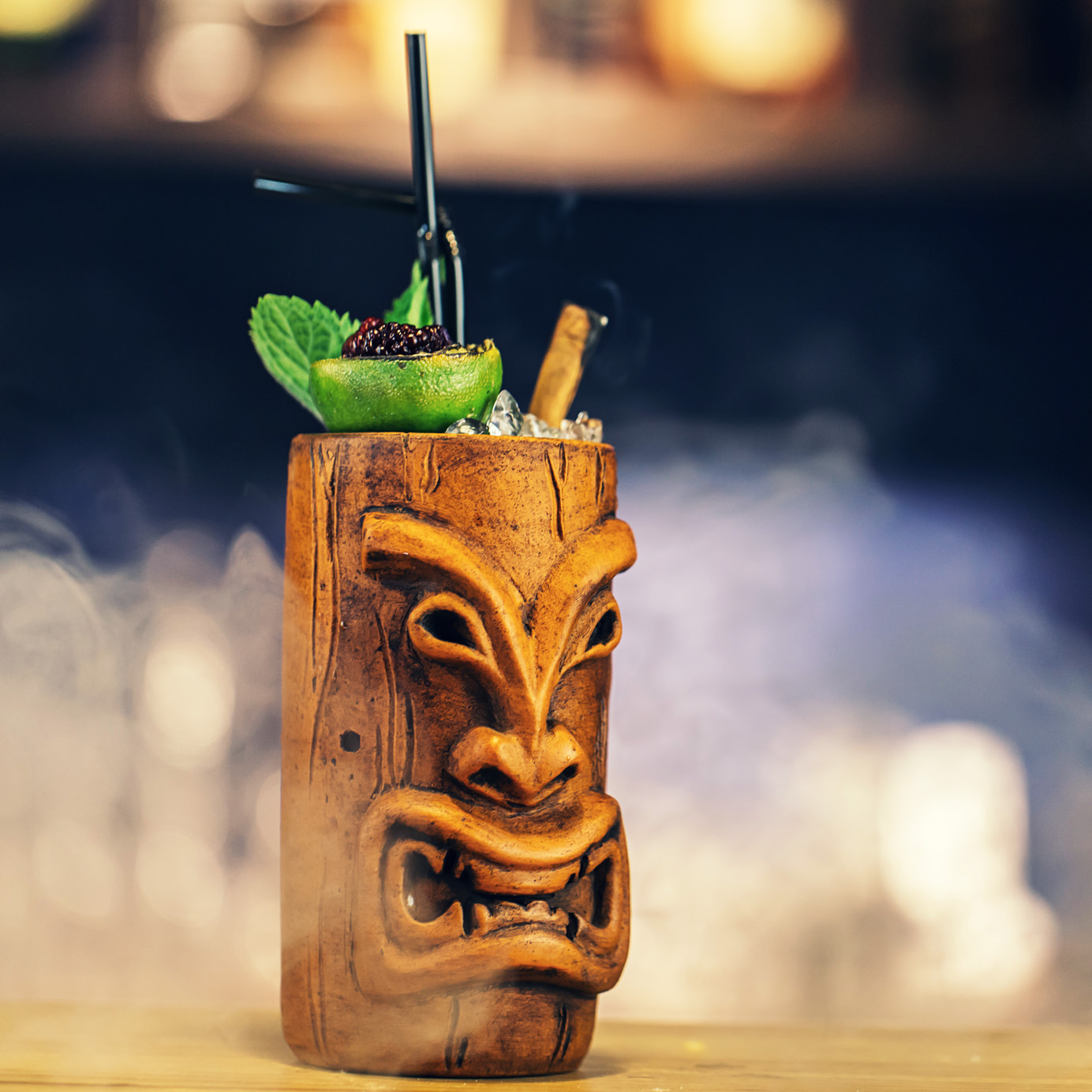Tiki, that all-American fantasia of faux-Polynesian flavors and decor, is among our most enduring cocktail movements. Now a new gang of tiki drinks is sweeping American bars, and they’ve swapped rum for whiskey. But don’t worry — they still have those tiny umbrellas.
Cynics without a spiked coconut in their hands might argue that the spirits world is rife with trends, from Negroni madness to limited-edition bourbons with triple-digit price tags. Is the whiskey tiki innovation the internet or parachute pants — a permanent fixture or just a passing phase?
https://www.instagram.com/p/BRtwcVUh6gp/?taken-by=threedotsandadash
“The use of whiskey in modern tiki drinks is absolutely not a fad,” Jane Danger, beverage director at Mother of Pearl in NYC, says. “The flavors often found in classic tiki tipples are fully suited for bourbon, rye, even Scotch and Irish [whiskey].”
Mother of Pearl, which defines itself as a “postmodern Polynesian restaurant,” is an ardent supporter of whiskey tiki. Its Shark Eye cocktail uses both bourbon and rye, and Tiki Peat mixes blended Scotch with a peated Islay single malt.
In New Orleans, Beachbum Berry’s Latitude 29 specializes in whimsical modern takes on the tiki, such as Sean & Juan, a marriage of tequila, Irish whiskey and crème de cacao, and the Paniolo, which uses bourbon and macadamia nut liqueur. Hala Kahiki, a venerable tiki lounge in Chicago, mixes over 130 different tropical drinks, some of which have been around for 50 years. They include a number of whiskey tikis, such as the Purple Passion and Hawaiian Torch.
Three Dots and a Dash, a modern tiki destination in Chicago, gets its name from the Morse code for “victory” — the U.S. troops’ signal that World War II was over. Kevin Beary, the bar’s beverage director, agrees that whiskey and tiki are natural allies.
“Much like rum,” Beary says, “whiskey offers incredible diversity within the category. Whether adding an accent of peated Scotch whisky or the spiciness of rye, whiskey most certainly has a place in tiki cocktails.”
https://www.instagram.com/p/Bf_fY_ZlJho/
Whiskey has many of the same notes as rum — vanilla and caramel, for example — making this more of a natural swap than a stunt. Danger also points out that rums are aged in used bourbon barrels, so the essence of whiskey is already present in tropical drinks.
Additionally, certain canonical tiki cocktails have always featured whiskey. Classics like the Eastern Sour and Port Light both use whiskey.
Historically, of course, rum was king. First-wave tiki bars opened in the aftermath of Prohibition, making rum a natural spirit of choice. Don the Beachcomber, America’s first tiki bar, debuted in 1934 in Los Angeles, and was loosely inspired by the travels of owner Donn Beach (née Ernest Raymond Beaumont Gantt) in the Caribbean and South Pacific. It was joined soon after by Trader Vic’s in Emeryville, Calif.
The movement took off following World War II. A confluence of factors, including the success of Rodgers and Hammerstein’s musical “South Pacific,” a Polynesian exhibition at the 1939 World’s Fair, Hawaiian statehood in 1959, and post-war GIs who had served in the Pacific theater, aided its rise.
Tiki bars prided themselves on large selections of rum, and used it in colorful, iconic cocktails like Scorpions, Zombies, and Mai Tais. These fun, fruity drinks were served in coconut halves or tiki mugs, and festooned with umbrellas, straws, and tropical fruit. The decor was similarly free-wheeling, with Polynesian (or Polynesian-inspired) music, dancing, bamboo, torches, tiki masks, palm trees, waterfalls, and the like.
The craze lasted for a good 30 years but was considered passé by the ’70s, perhaps because you couldn’t disco with a giant shark mug in your hand.
https://www.instagram.com/p/BOz4_B9jiOm/?taken-by=motherofpearlny
Today, great tiki bars continue to open all over the country, like Pittsburgh’s Hidden Harbor, Chicago’s Lost Lake, the Little Buddy Hideaway in Asbury Park, Barrel in D.C., and L.A.’s Tonga Hut. Several offer whiskey cocktails, catering both to changing tastes (and the category’s post-“Mad-Men” explosion), and the diversity of excellent American craft whiskeys on the market.
Whiskey is our national drink — Congress famously named bourbon “America’s Native Spirit” in 2007 — and tiki is a kitschy, imaginative vision of tropical indulgence born entirely on U.S. shores. It’s a marriage made in… well, if not heaven, at least L.A.
